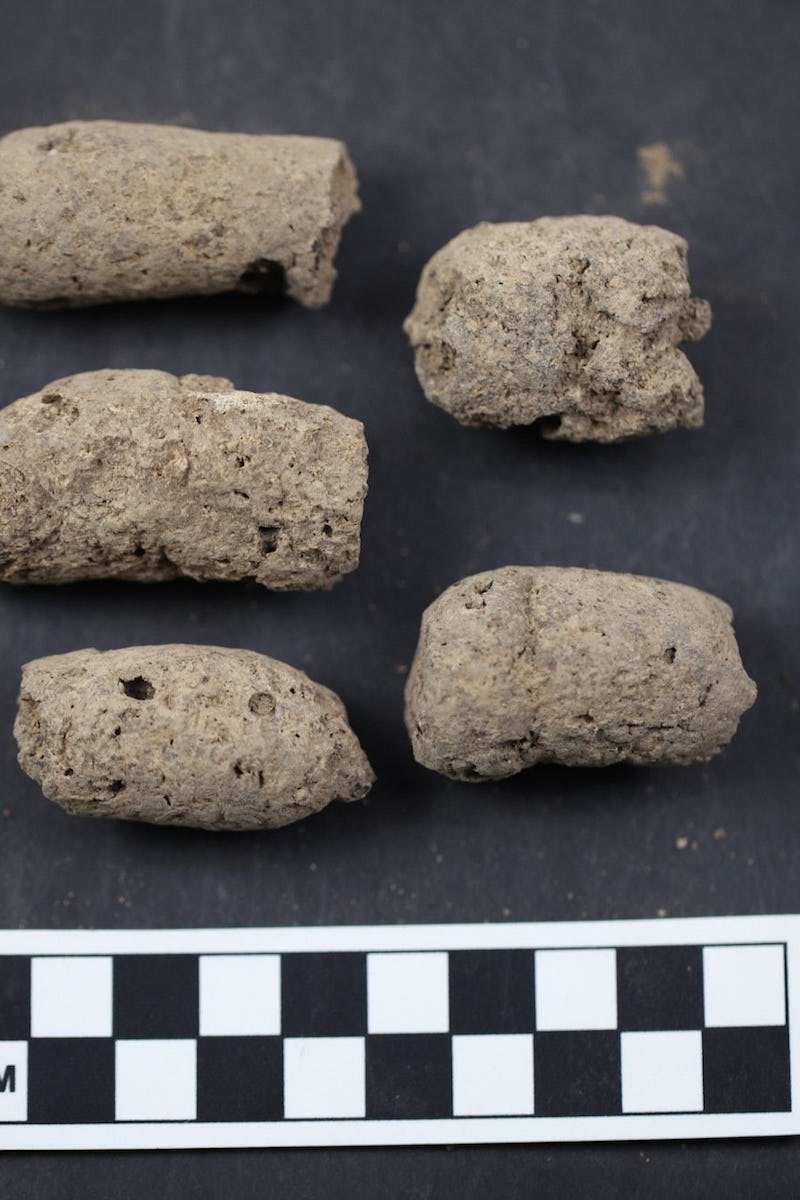
"The archeological record is full of dog poop."
Machine learning solves a mysterious problem linked to ancient poop
Scientists developed a new way of scanning fossilized feces. This can help solve an archeological riddle: the difference between dog and human poop.
by Nina PullanoIn their quest to unearth the hidden mysteries of human evolution, archaeologists have been held up by a peculiar fossil phenomenon. Human feces, it turns out, are nearly indistinguishable from those left by a dog.
That can confound research since scientists aren’t sure if they’re analyzing excrement that will ultimately answer questions about people or canines. Crucially, researchers announced Friday that they've developed a new method of screening scat.
By combining DNA analysis with machine learning, scientists now have a new way to scan fossilized feces —technically called coprolites. The researchers trained their technology on modern human feces, teaching it to look for the specific microbes that humans have — and rule out other coprolites as non-human. This allows them to determine if the coprolites came from a human or a dog.
This method, called coproID, is detailed in a study published in the journal PeerJ.
An example of fossilized feces, now confirmed to be from an ancient human.
Scanning the archaeological record — Looking at coprolites can tell archaeologists a lot about human behavior in the past. It gives clues as to ancient health and diet — both human and animal — as well as the evolution of parasites and changes in the microbiome over time.
To get that data, however, researchers need to know whose trace fossils they're actually studying — human or otherwise. Historically, that has presented a challenge, since human poop doesn't look all that different from dog poop. Both types of feces are similar in size and shape, they occur simultaneously at archaeological sites, and domesticated dogs eat similar diets to their human friends.
Plus, dogs sometimes eat human garbage, including, yes, human poop. And in many ancient cultures, dogs weren't just pets and working animals — they were food. Because of that crossover, previous methods of analyzing the source of paleofeces — looking at DNA alone to make genetic inferences — have often turned up inaccurate, with traces of dog DNA in human feces and vice versa.
Coprolites from a dog, discovered in China's Anhui Province.
That’s where the new poo-scanning technology can clear things up. Already, it has turned up some surprises, says senior study author Christina Warinner, a professor at Harvard University’s Radcliffe Institute for Advanced Study.
“One unexpected finding of our study is the realization that the archaeological record is full of dog poop,” Warinner said in a statement.
In the future, coproID could help push forward fields like forensics, ecology, and studies of the microbiome, Warinner said. Those insights could provide new information about how humans developed a number of health issues — like intolerance to certain foods.
"Given the importance of the gut microbiome in human health, there is great interest in understanding its recent evolutionary and ecological history," write the authors of the study.
Remains of a chamberpot discovered in Surrey in the United Kingdom.
Parsing man from man's best friend — How can you tell the difference between ancient human and ancient dog feces?
First, the researchers analyzed DNA within modern human and dog droppings to see where exactly the content of their feces differs. Then, they compared those differences in DNA to previously discovered coprolites.
The team analyzed a total of 21 samples from around the world, including from China, Mexico, Ireland, Portugal, Germany, England, Slovakia, and Spain. In turn, they were able to accurately predict where these ancient feces came from, and identify colonies of microbes that lived inside both ancient humans and dogs.
Coprolites are a window into the past — Researchers have used coprolites to learn more about other animals besides humans and dogs. In one 2017 study, scientists used a particle accelerator to look at 250 million-year-old dinosaur poop. The team used a synchrotron to identify the contents of the ancient dino poo — bits of fish and insects — and thus determine that it came from an extinct lungfish.
Coprolites are so interesting to one eccentric collector, George Frandsen, that he's collected more than 5,000 specimens — earning him the Guinness World Record for the largest collection of fossilized poop. Frandsen's global collection ranges from 10,000 to 400 million years old — and from a tiny poo speck to a whopping four-pounder. Online, Frandsen curates the Poozeum, as Inverse reported in 2016.
As collector's items, coprolites might not be for everyone.
But as research tools — whether illuminating human history or the prehistoric food web — these fossilized feces may be a crucial tool, helping scientists uncover some of history's oldest secrets.
Abstract: Shotgun metagenomics applied to archaeological feces (paleofeces) can bring new insights into the composition and functions of human and animal gut microbiota from the past. However, paleofeces often undergo physical distortions in archaeological sediments, making their source species difficult to identify on the basis of fecal morphology or microscopic features alone. Here we present a reproducible and scalable pipeline using both host and microbial DNA to infer the host source of fecal material. We apply this pipeline to newly sequenced archaeological specimens and show that we are able to distinguish morphologically similar human and canine paleofeces, as well as non-fecal sediments, from a range of archaeological contexts.